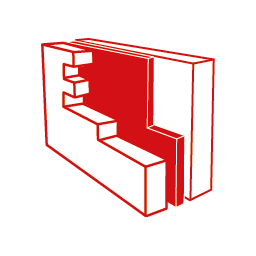Compartmentalisation

The buildings, according to their use and surface, are divided into fire sectors. Each consists of a space demarcated by walls and ceilings of a certain fire resistance that prevent the spread of fire to other fire sectors.
The Technical Building Code (CTE), through section SI 1 (interior spread), establishes the maximum surfaces per fire sector based on the use of the building. The fire resistance required for the elements that make up each fire sector is reflected in table 1.2 of the CTE.
Compartmentalisation is a very important part of passive fire protection, as it prevents fire from spreading to the rest of the building. The fire is thus confined within the fire sector where it originated.
Objectives:
Perlita y Vermiculita has different constructive solutions for the compartmentalisation of buildings. A list of these solutions is attached below:
The elements intended for compartmentalisation must have the fire resistance required by the CTE (Technical Building Code) for residential and non-residential building, or by the RSCIEI (Fire Safety Regulations in Industrial Establishments) for industrial-type premises.
Here you will find some of our recommended products to ensure greater passive fire protection: